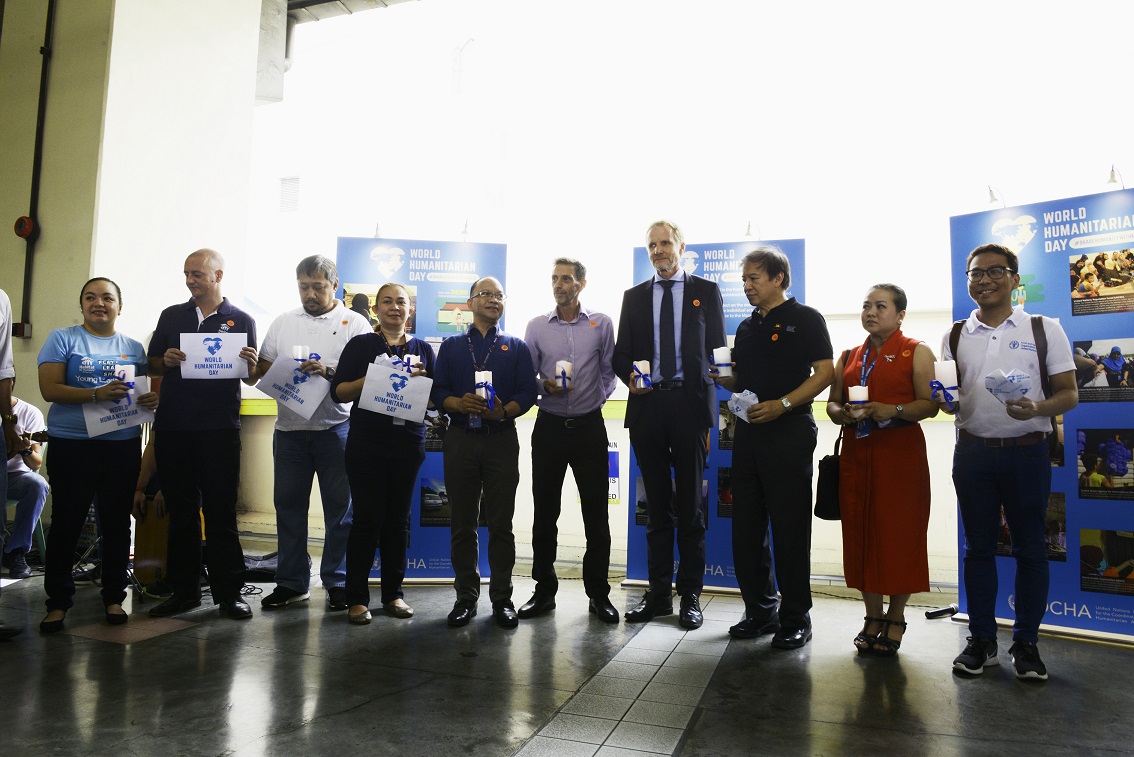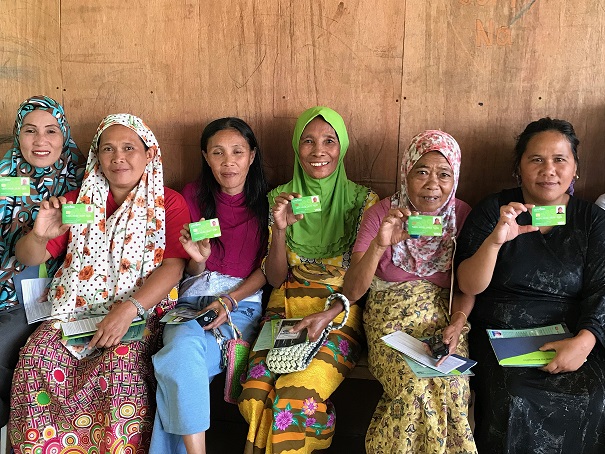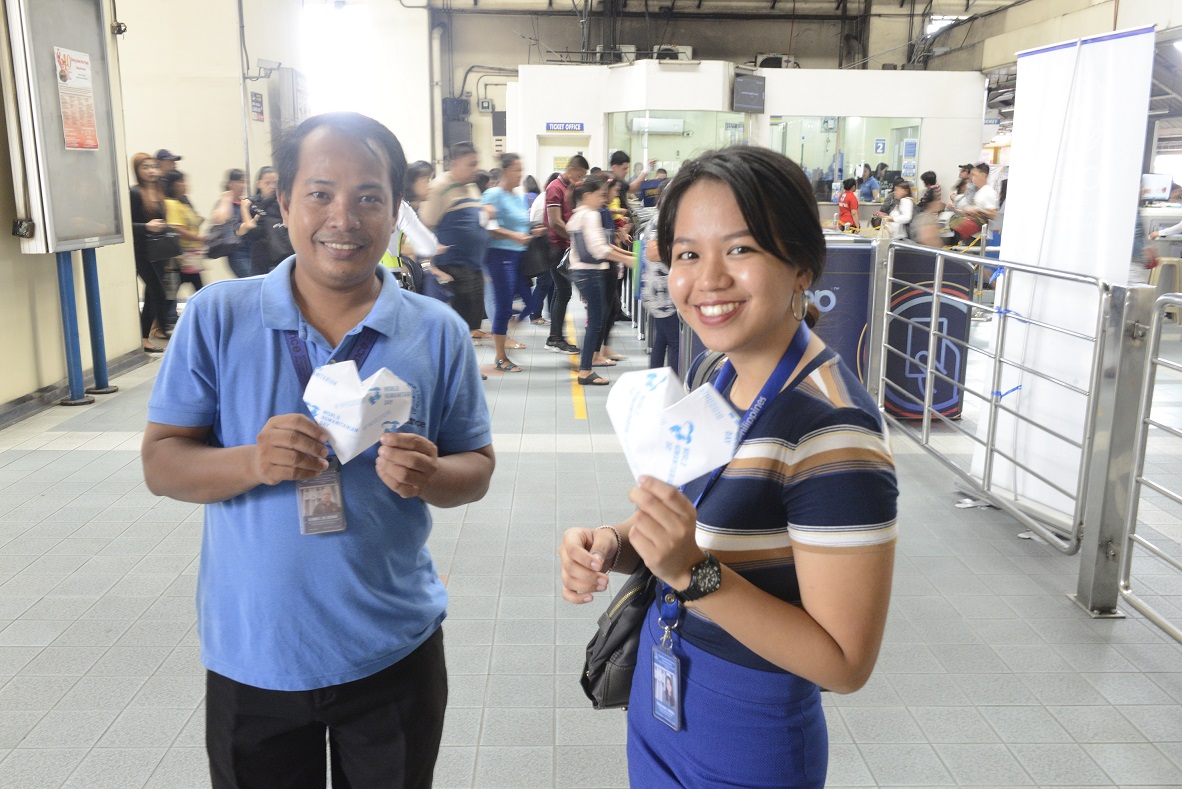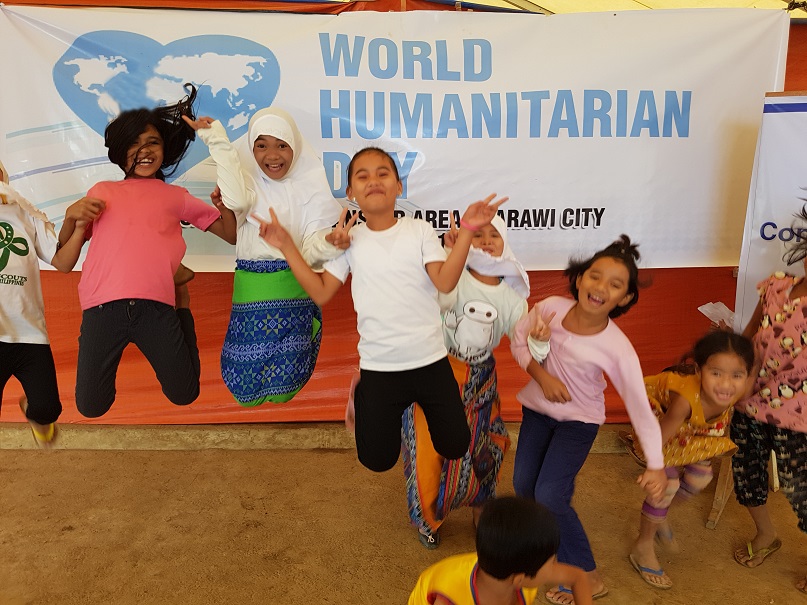
Mid-point review of Marawi emergency response funding
The UN Central Emergency Response Fund (CERF) allocated a US$5 million grant to the Philippines in February to address the underfunded humanitarian needs of people displaced by the Marawi conflict. This is the second allocation of funds from the CERF in response to the conflict, making it currently the second largest donor for activities included in the Humanitarian Country Team’s Marawi Response and Resource Overview document, which identifies continuing unmet humanitarian needs and a response framework extending to December 2018.
Beginning in March, seven recipient UN agencies—the Food and Agriculture Organization of the United Nations, United Nations Development Programme, United Nations Population Fund (UNFPA), United Nations High Commissioner for Refugees (UNHCR), United Nations Childrens Fund (UNICEF), World Food Programme (WFP) and World Health Organization (WHO)—are focusing on priority needs in food security, health, nutrition, protection and cash assistance for nearly 78,000 people affected by the Marawi conflict. In addition to Marawi City, five municipalities in Lanao del Sur were selected: Bubong, Marantao, Ditsaan-Ramain, Piagapo and Saguiaran.
An integrated approach to managing acute malnutrition has been established in the target communities. UNICEF has reached 58 per cent of targeted mother and caregivers in its infant and young child feeding programme, and has met or exceeded its targets for screening and referring children aged 6 to 59 months for acute or severe acute malnutrition. WFP's nutrition intervention in health facilities has reached 21 per cent of children aged 6-59 months and 36 per cent of pregnant and lactating women participating in its programmes.
UNFPA is working with local authorities on information campaigns to address gender-based violence and women's human rights and establishing women-friendly spaces in its targeted sites. It is also supporting reproductive health through medical missions and the distribution of dignity and maternity kits.
Continuing its tracking of internally displaced persons, community empowerment and supporting access to grievance mechanisms, UNHCR is launching a community engagement programme to bring awareness and improve access to critical information by those displaced.
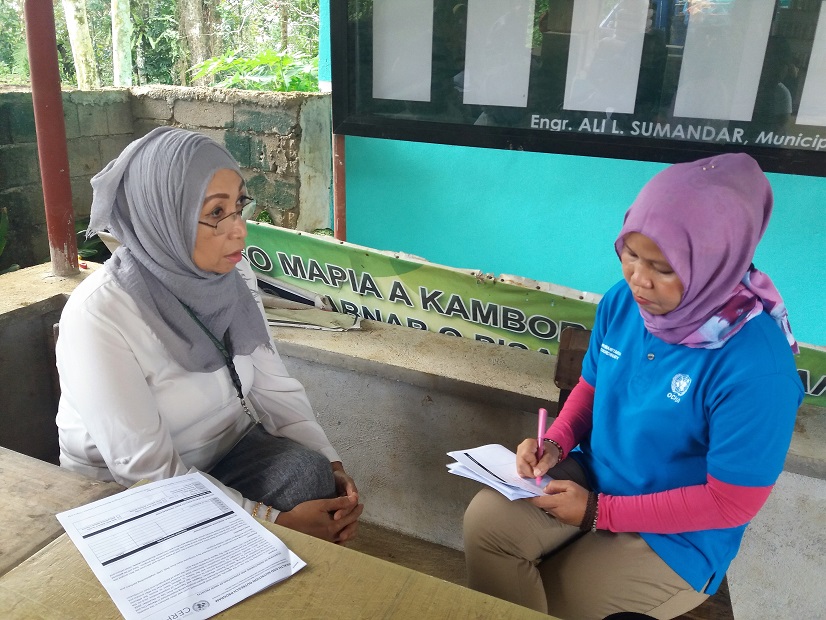
Credit: OCHA/R. Maquilan Barangay Moriatao, Loksadatu (20 July 2018) - Dr. Shalimar Rakiin, left, is the current chief of Amai Pakpak Hospital in Marawi City
Monitoring and evaluation visits to target areas
While challenges in security and the continuous movements of displaced persons remain, there is positive feedback from the beneficiaries. On 20 July, WHO, UNFPA, UNICEF, together with OCHA and local partners, conducted their first monitoring visit to the Rural Health Unit in Piagapo for its health and nutrition programme. Provincial Health Office representative Dr. Shalimar Rakiin said that she feels the CERF project is effective because it is inclusive. Local health officials are involved and consulted in the process of implementation, and agencies are open to accept suggestions. She hopes that these interventions are replicated in other humanitarian response efforts.
Financial inclusion in Marawi recovery efforts
Though it is meant to help bridge the needs of displaced communities as they transition from reliance on humanitarian assistance towards long-term recovery and development, early recovery support is often limited. Among the key needs for those who are returning to their homes are livelihood support and the revival of the local economy. The city of Marawi has always been the center of trade for the province of Lanao del Sur and some municipalities of Lanao del Norte. The area most devastated by the conflict was the business centre of the city. Many of those displaced who are returning are traders and business owners who have lost their homes, their livelihood and even civil documents, and are starting from scratch. Ready access to appropriate financial resources is needed to accelerate socio-economic recovery. With funding from the UN Central Emergency Fund (CERF) underfunded emergencies grant, the Financial Inclusion for the Recovery of Marawi (FIRM) project is being implemented by the United Nations Development Programme in partnership with Oxfam to provide support to micro-, small, and medium enterprises owned by displaced persons who lack access to formal financial services.
How FIRM works
The FIRM project works as a cash transfer programme that seeks to build a sustainable financial system which offers both immediate assistance and financial services based on Islamic financial principles. It also aims to develop the capacity of people affected by the Marawi conflict to manage their personal and business finances effectively and to make businesses more resilient. It serves as a platform for the affected population to access affordable and integrated digital financial services that respond to social service needs, savings and livelihood expansion or strengthening.
Through the FIRM project, 10,000 of the most vulnerable persons who were displaced from Marawi, and the municipalities of Saguiaran and Bubong, Lanao del Sur, will be given access to immediate basic needs utilizing a digital platform. Sixty per cent of the programme participants are women. The programme, either through cash-for-work or cash-for-care activities, cash-for-asset-recovery, or cash grants, aims to restore critical livelihoods in trading and commerce and to diversify livelihood through efficient, transparent and safe cash transfers.
For many, it will be their first time to make cashless transactions in purchasing goods at participating local stores and to make deposits or withdrawals at any automated teller machines. The cards are also personalized and contain their pictures, so they can alternatively serve as identification cards while they wait for the reissuance of their documents lost during the conflict.
The project will also give the project participants access to information and education on financial management, which will increase their financial awareness and help them to better control their finances.
Kicking off financial recovery efforts in Lanao del Sur
To date, more than 15,000 people have registered for the project. Out of these, 10,000 will be selected as beneficiaries for the financial inclusion project, based on specific criteria. Community consultations and social preparations have already begun, and market assessments and livelihood inventories are taking place in Marawi, Bubong and Saguiaran to determine the kinds of interventions that would best suit the communities. Municpipal and barangay project management committees are also being formed to facilitate the identification of the beneficiaries and cash-for-work activities in the identified communities. The distribution of the digital cash cards is scheduled for September.
For Mrs. Malinbae Bagumbaran, 65 years old and a mother of 10, the assistance is timely and important. Not only will the cash intervention give her and her family access to basic needs, it will enable them to build savings. The digital cards will also be a convenient way to receive money from family abroad, since the money would go directly to their account, eliminating the need to claim it from a remittance centre.
The FIRM cash transfer programme is jointly implemented by UNDP and Oxfam with People's Disaster Risk Reduction Network, PayMaya, Smart Padala, AI-Mujadilah Development Foundation, Initiatives for Dialogue and Empowerment through Alternative Legal Services, and Mindanao State University.
For many, it will be their first time to make cashless transactions in purchasing goods at participating local stores and to make deposits or withdrawals at any automated teller machines.
Philippine initiatives in cash transfer programming
The World Humanitarian Summit in 2016 laid the foundation for stakeholders to commit to reduce suffering and improve the delivery of assistance for people caught in humanitarian crises. One of the commitments made during the summit was to increase the use and coordination of cash-based programming and assistance, as outlined in the Grand Bargain. Over 20 donors and 30 aid organizations endorsed the commitments. Consequently, the 2018 State of the World’s Cash Report published by the Cash Learning Partnership describes a growing trend globally towards cash transfer programming, recognizing its wide usage as one of the most significant areas of innovation in humanitarian assistance, with potential to meet more needs efficiently and effectively. There is growing recognition among aid agencies and donors that in certain contexts cash transfers can meet project objectives. Feedback from various studies also point to a trend that cash based-responses will continue as a modality of assistance.
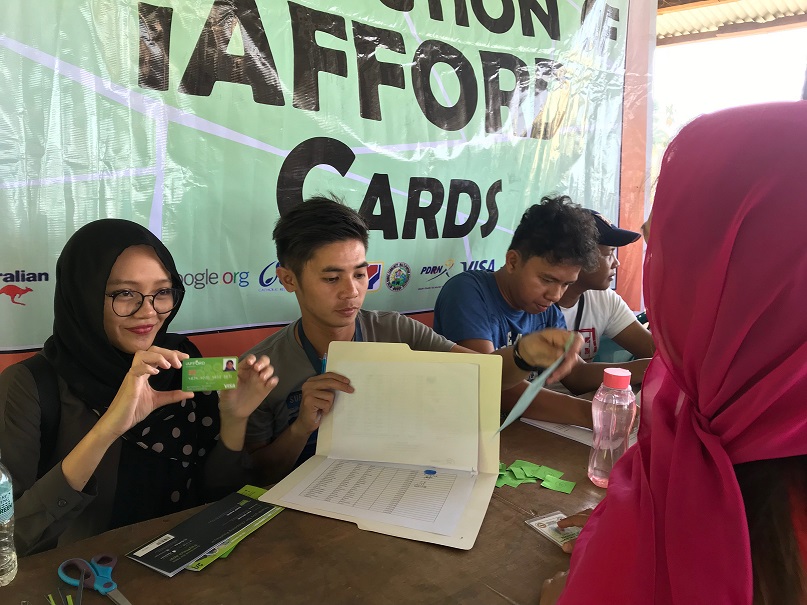
Credit: Oxfam/R. Avila Pantar, Lanao del Sur (July 2018) - Participants of the Financial Inclusion for Recovery of Marawi (FIRM) at the distribution of digital cards that will serve as a form of identification as well as an ATM card.
The cash-based programmes of the Food and Agriculture Organization (FAO) have provided relief to farmers who have been affected by natural hazards, conflict and protracted crises. In the past twelve years, the Government of Pakistan has successfully used cash transfers to assist disaster affected populations and considers cash assistance a social contract with its citizens. Pakistan’s experience and good practices in cash transfer programmes in emergencies inspired OCHA's country office in the Philippines to plan for a cash learning mission to Pakistan. The mission, scheduled for October, is expected to provide an opportunity for both governments to exchange good practices and address challenges related to the policy/ framework development, provision and coordination of cash assistance in emergencies.
Cash transfer practices in the Philippines
In the Philippines, humanitarian organizations started to use cash transfer programming during the 2009 Typhoon Ketsana response. Since then, it has grown in usage and continues to be a choice modality for delivering humanitarian assistance for both natural disasters and armed-conflict emergencies in the country. From 2009 to 2018, the two most common reasons for humanitarian organization’s use of cash transfers was for economic activities related to livelihood restoration and to support and stabilize food security conditions of affected people by improving their purchasing power and access to basic needs and government services. A 2011 report (PDF) published by the Cash Learning Partnership indicates that in spite of the perceived risk and potential misuse of cash transfers by recipients, beneficiaries used the cash transfers as intended and expressed appreciation for the flexibility of choice. On the programming side, the preparation and implementation of cash programmes was fast and cost efficient, and not subject to more corruption than in-kind distributions.

Credit: UNDP Marawi City, Lanao del Sur (15 April 2018) - Digital card registration caravan.
Gabrielle Smith, author of Cash Coordination in the Philippines (PDF), provides an overview of the use of cash transfer programming during the 2013 Typhoon Haiyan response. According to the report, cash transfer programming amounting to US$845 million, or 40 per cent of the entire relief response, was implemented by about 45 international humanitarian organizations. To learn from this experience, the Humanitarian Country Team (HCT), comprising UN agencies and international and local nongovernmental organizations, established a cash working group to serve as a platform for the coordination of cash-based activities. It also serves as a forum for strategic and technical discussions on the use of cash programming in humanitarian response and preparedness among HCT members and financial service providers.
In an initial report compiled by the cash working group, covering the period 2017 to 2018, 11 humanitarian organizations in partnership with 26 local and international organizations have disbursed approximately PHP622.5 million ($11.6 million) worth of cash-based interventions for more than 53,000 households affected by eight different emergencies in the country. Of a total of 496 cash-based intervention activities, 476 have been completed and 20 are on-going. The province of Lanao del Sur is the location of 148 cash-based interventions due to the Marawi conflict, while the fewest number of interventions was in Camarines Sur following the Mayon Volcano pre-emptive evacuation response in January 2018. In most cases, the interventions were conditional, with multipurpose cash transfers being the most popular. The most preferred delivery mechanism was through electronic payment via mobile money transfer.
The report illustrates the extent to which cash transfer programming is used as a modality of response, but more work is needed to continue collecting data and monitoring programme implementation. Government agencies lack mechanisms, policies and guidelinee that would facilitate decision-making. One way that the cash working group supports government counterparts to ensure an enabling environment for using cash transfer programming is to conduct market assessments that would inform appropriate modalities of response as an emergency progresses. Market assessments and analyses provide decision makers information on appropriate interventions, modalities and delivery mechanisms apart from the computation of minimum expenditure baskets.
Capacity building and financial inclusion initiatives in Mindanao
Recently, the cash working group rolled out a rapid assessment of markets tool through a training workshop in Iligan City. Participants from Autunomous Region in Muslim Mindanao (ARMM) government agencies and local and international organizations participating in the humanitarian response to the Marawi conflict also applied what they learned by conducting market assessments in Iligan and Marawi Cities.
The cash working group intends to increase the capacity of all stakeholders on cash transfer programming and market assessments in conflict-affected areas of ARMM and to conduct a pre-market assessment and analysis as one of its advance preparedness activities. As part of the ongoing recovery efforts for the Marawi conflict, The United Nations Development Programme and Oxfam are implementing the Financial Inclusion for Recovery of Marawi (FIRM) project which provides support micro-, small, and medium enterprises owned by displaced persons who lack access to formal financial services. The project will also raise participants' financial awareness through information and education on financial management, which will further help them control their finances.
There is growing recognition among aid agencies and donors that in certain contexts cash transfers can meet project objectives. Feedback from various studies also point to a trend that cash based-responses will continue as a modality of assistance.
In spite of the perceived risk and potential misuse of cash transfers by recipients, beneficiaries used the cash transfers as intended and expressed appreciation for the flexibility of choice. On the programming side, the preparation and implementation of cash programmes was fast and cost efficient, and not subject to more corruption than in-kind distributions.
Five years on: a Zamboanga response update
September will mark five years since the Zamboanga conflict in 2013, where fighting between a faction of the Moro National Liberation Front and the Armed Forces of the Philippines forcibly displaced 118,800 people in Zamboanga City. The 20-day conflict left at least 140 people dead and over 10,000 houses destroyed. Zamboanga city authorities led the humanitarian response, with the mayor chairing the intercluster coordination group. The Local Inter-Agency Committee engaged humanitarian agencies to find solutions for the humanitarian and recovery gaps under the Zamboanga City Roadmap to Recovery and Reconstruction (locally known as Z3R) plan, while the Zamboanga Mindanao Humanitarian Team, composed of UN agencies, international and national non-government organizations, supported the city government’s response. The humanitarian response plan received nearly US$6 million in funding according to the OCHA Financial Tracking System.
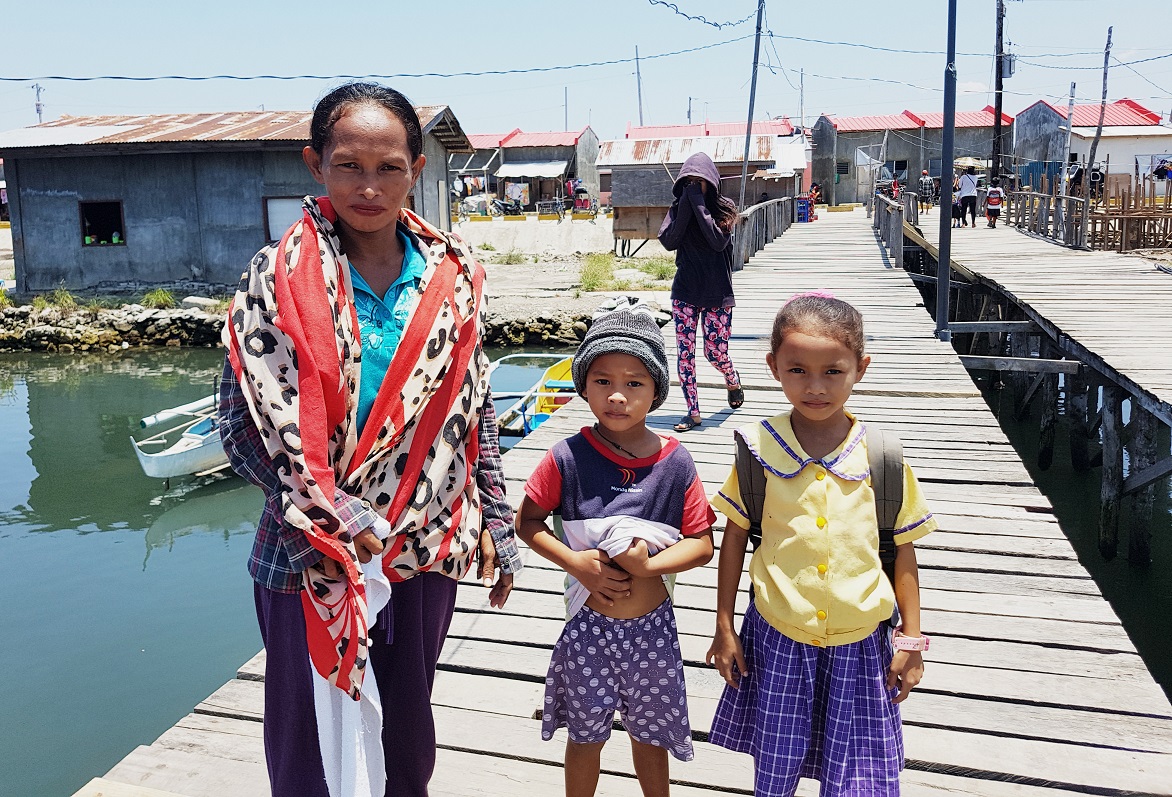
Credit: OCHA/S. Taulani Zamboanga City (15 August 2018) - Zainab, from the Valle Vista permanent housing site, taking her children to school
The last push: durable solutions for the remaining displaced
Five years on, more than 90 per cent of displaced families have been provided permanent housing. As of 18 July, about 240 families (1,220 people) remain in five transitional shelters. But, whether they are in permanent housing or still waiting in transitional shelters, water, sanitation and electrification are just a few of the issues people displaced by this conflict continue to face. In 2017, regular medical consultations and the trucking of potable water for those in the Mampang transitional site ended due to lack of funding. Nevertheless, Zamboanga City authorities continue to respond to the needs of those displaced. While the majority who have relocated to permanent housing are rebuilding their lives, those who remain displaced are still seeking a permanent place to call home.
Perspectives of Zamboanga displaced and returnee women
Nuhar, a single mother of three and among the 90 families still living at the Mampang 2 transitional site, is among those waiting to go home. "I feel like I have no direction in life as long as I am in this transition site. I hope to be transferred to permanent housing so that I could have peace of mind knowing that we are home and can have a stable livelihood," she shared.
Joy, an expectant mother, wants to leave the site and move to permanent housing for the sake of her family. “I want my baby to grow in a permanent home. It is difficult to be displaced for years. You do not have peace of mind or a sense of security,” she said.
Families in permanent houses in Mariki and Kasanyangan are focusing on getting their livelihoods back on track. For some, it has been a struggle. Evelyn, a resident of Mariki, said they do not expect much support from the Government and understand that they must do it on their own.
Zainab, a resident in Kasanyangan, said that families have re-established their daily routine of taking their children to school, going to work, and feeding their families. “We are struggling to regain what was lost. At least we now have a home, and I manage to send my children to school. I want them to finish their education to have a better life than I had," she shared.
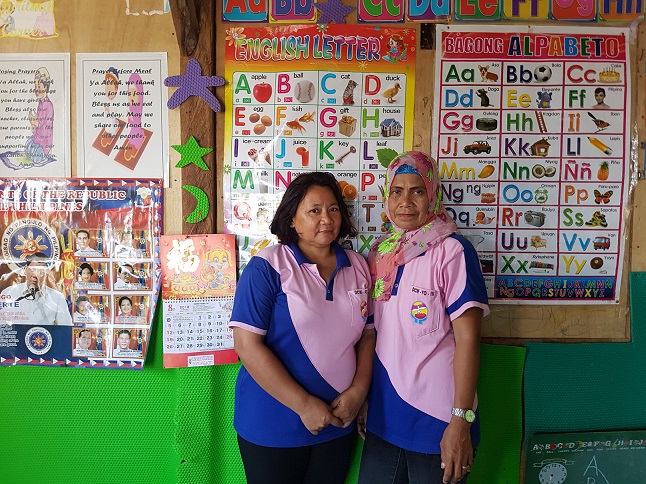
Credit: OCHA/S. Taulani Zamboanga City (15 August 2018) - Evelyn and Rowena, both displaced residents, serve as daycare workers in Mampang 2 transitional site, where they conduct classes for children under six years old. Their 52 students sit on the floor for lack of tables and chairs. The two workers receive a P1,000 ($18.76) monthly allowance. When asked why they teach children, they replied that they want the children to have the opportunity to learn even in displacement. They hope that the children and their families will have a home to call their own and will be able to send their children to a regular school in the next year.
Reflections from city authorities
Mr. Jojo Sicat, City Planning and Development Officer, said that while local authorities must be at the forefront of the response, “the humanitarian community’s engagement with the city authorities helped us do our jobs better. They kept us on our toes,” he said. The LIAC played an important role in coordinating and resolving issues in humanitarian and recovery efforts of the government.
Ms. Socorro Rojas, City Social Welfare Officer, shared the challenges they overcame along the way as they led the protection and camp management clusters. “It was a struggle operating the office with limited funds," she said. "We relied on assistance from other government agencies, the mayor’s office, private donors, and humanitarian partners to deliver assistance to the those displaced.” Ms. Rojas said that the city housing division is trying to address the transfer of the remaining 31 families in the village of Rio Hondo. The families have concerns regarding land ownership, and she hopes that they will soon be transferred to the permanent housing in the coming weeks so that the remaining transitional shelters can finally be closed. Atty. Cristina Marie Eugenie Javier-Jimenez from Region IX’s Commission on Human Rights said that beneficiary selection and the reported reselling of permanent housing are some of the prevailing issues that the city government is addressing.
Dr. Elmeir Apolinario, Zamboanga City Disaster Risk Reduction Mamangement Officer, said that the 2013 crisis destroyed lives, property and livelihoods, but it also caused the city to engage with its people and discuss issues of real concern. Working with the humanitarian community was a challenging, but rewarding, partnership. Discussions that sometimes became heated ultimately created solutions to issues affecting those displaced. “There are still matters to be addressed, but it makes me hopeful about the future when I see these families living in peace and leading normal lives,” he reflected.
Humanitarian actors continue to lend assistance
Early this year, Integrated Resource Development for Tri-People, a local nongovernmental organization, supported the city's social welfare office in a community programme at the Valle Vista permanent housing site, and still monitors the situation there. OCHA and UNHCR continue to assist city authorities, most recently conducting a consultation with 124 people still displaced in July.
Merriam Tedding of Community and Family Services International hopes that the government will finally be able to award houses to the remainder of those displaced. "They see it as a new beginning when they are finally in their own permanent homes."
Whether they are in permanent housing or still waiting in transition shelters, water, sanitation and electrification are just a few of the issues people displaced by this conflict continue to face.
The city housing division is trying to address the transfer of the remaining 31 families in the village of Rio Hondo. The families have concerns regarding land ownership, and [the City Social Welfare Officer] hopes that they will soon be transferred to the permanent housing in the coming weeks so that the remaining transitional shelters can finally be closed.
Across the Philippines: World Humanitarian Day
In commemoration of World Humanitarian Day on 19 August, humanitarian agencies honored the dedication, sacrifice and hard work of organizations and individuals who have made a difference in the response to conflict in Mindanao.
In Cotabato City, members of the Mindanao Humanitarian Team (MHT), composed of UN agencies and international and national nong-governmental organizations based in Mindanao, held a community 'Stand Together' event in the remote community of Sitio Bahar, South Upi, Maguindanao.
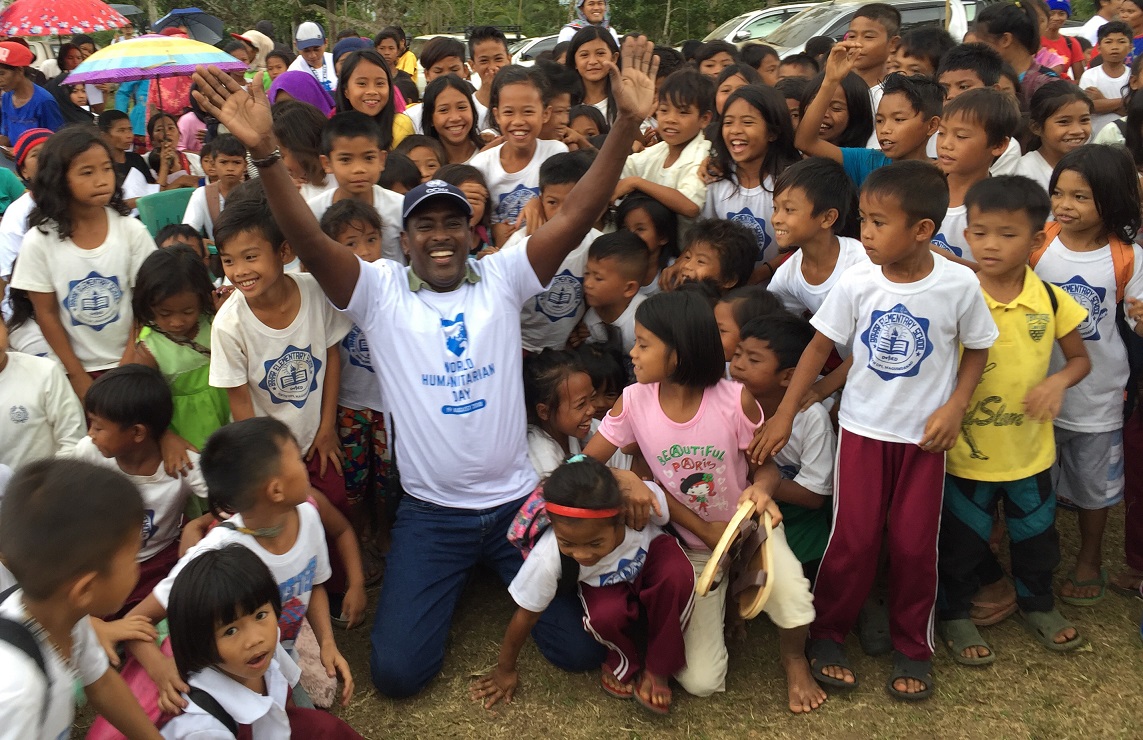
Credit: OCHA/G. Asis
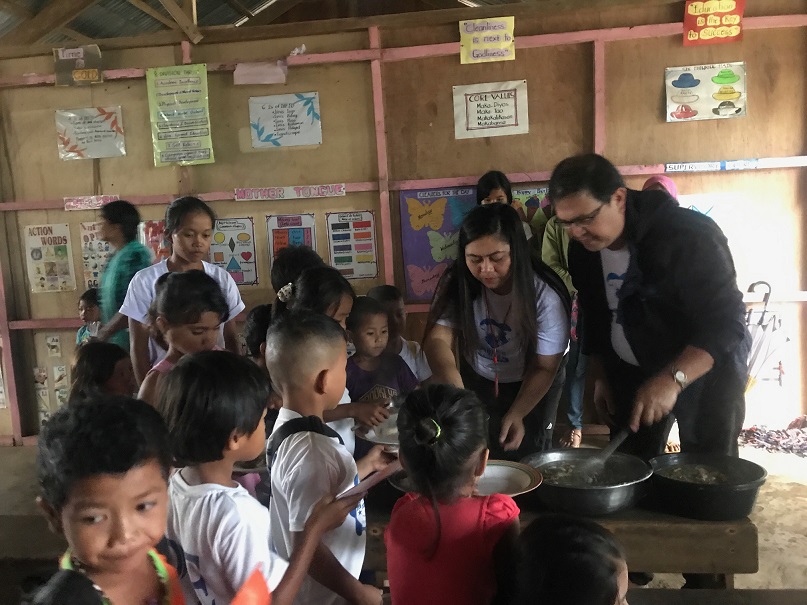
Credit: OCHA/M. Malang
In Marawi City, MHT members commemorated the day by sharing it with those who were displaced by the conflict there and are now living in the Sarimanok transitional shelters in Marawi.
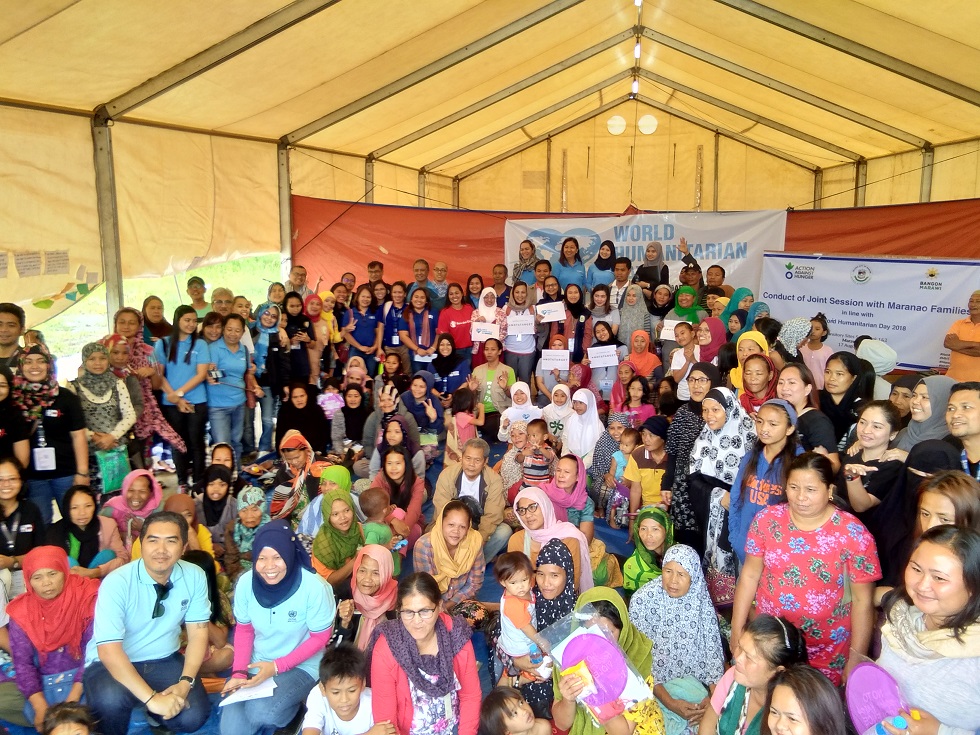
Credit: OCHA/S. Taulani
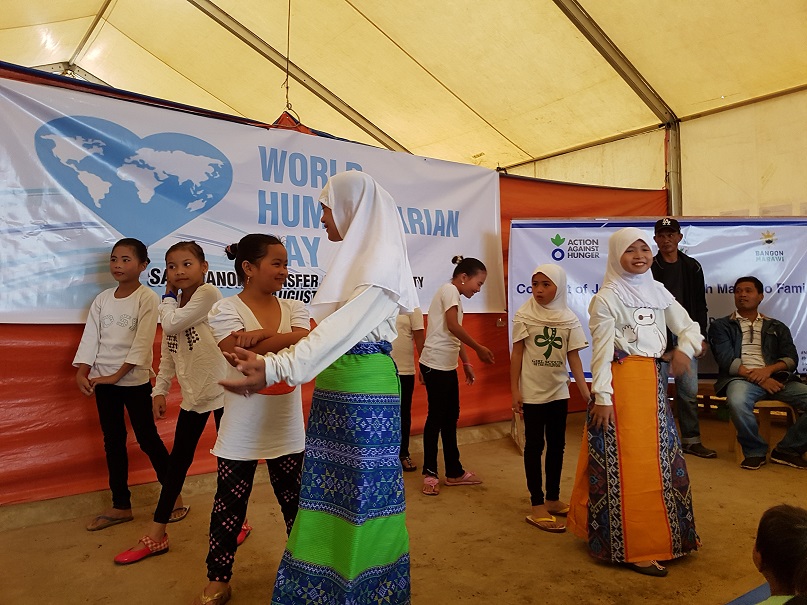
Credit: OCHA/S. Taulani
In Manila, humanitarian workers gathered for a candle ceremony and moment of silence at the ‘Share Humanity with MRT3’ event at the MRT Shaw Station concourse to bring awareness and to pay tribute to the continuing humanitarian response in Marawi.
